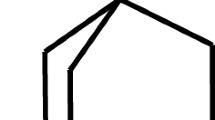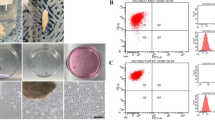Abstract
Recent advances in understanding the physiologic role of nerve growth factor (NGF), obtained both from tissue culture and efficacy studies in animals, have suggested that neurotrophic factors may have clinical potential in the treatment of neurodegenerative diseases or nerve trauma [12, 21]. First characterized as a target-derived survival factor for developing sympathetic and sensory neurons, it is now clear that NGF plays an important role in the maintenance and regeneration of mature peripheral neurons. Prompted by in vitro findings, it was established in the mid-1980's that intracerebroventricular infusions of NGF are capable of rescuing basal forebrain cholineric neurons from axotomy-induced cell death produced by fimbria-fornix lesion. Given that degeneration of cholinergic neurons is a major contributing factor in the loss of cognitive function in Alzheimer's disease, there has been a great deal of interest in exploring the therapeutic potential of NGF in this disease [16]. The highly restricted specificity of NGF for sympathetic neurons, sub-populations of neural crest-derived sensory neurons and striatal and basal forebrain cholinergic neurons has for almost two decades spurred the search for other neurotrophic factors with specificities directed to the many classes of neurons which do not respond to NGF. The biology of the recently discovered NGF-related family of neurotrophic factors, the neurotrophins and ciliary neurotrophic factor (CNTF), and their receptors, offers new prospects for the therapeutic potential of neurotrophic factors in the motor neuron diseases.
Similar content being viewed by others
References
Arakawa Y, Sendtner M, Thoenen H (1990) Survival effect of ciliary neurotrophic factor (CNTF) on chick embryonic motoneurons in culture: Comparison with other neurotrophic factors and cytokines. J Neurosci 10: 3507–3515
Curtis R, Adryan KM, Zhu Y, Harkness PJ, Lindsay RM, DiStefano PS (1993) Retrograde axonal transport of ciliary neurotrophic factor is increased by peripheral nerve injury. Nature 365: 253–255
DiStefano PS, Friedman B, Radziejewski C, et al (1992) The neurotrophins BDNF, NT-3, and NGF display distinct patterns of retrograde axonal transport in peripheral and central neurons. Neuron 8: 983–993
Friedman B, Scherer SS, Rudge JS, et al (1992) Regulation of ciliary neurotrophic factor expression in myelinrelated schwann cells in vivo. Neuron 9: 295–305
Friedman B, Kleinfeld D, Ip NY, et al (1994) BDNF and NT-4/5 exert neurotrophic influences on injured adult spinal motor neurons. J. Neurosci (in press)
Glass DJ, Yancopoulos GD (1993) The neurotrophins and their receptors. Trends Cell Biol 3: 262–267
Henderson CE, Camu W, Mettling C, et al (1993) Neurotrophins promote motor neuron survival and are present in embryonic limb bud. Nature 363: 266–270
Ikeda K, Klinkosz B, Mitsumoto H, Cedarbaum JM, Wong V, Lindsay RM (1994) Effects of brain-derived neurotrophic factor (BDNF) on motor dysfunction in wobbler mouse motor neuron disease. Ann. Neurol (submitted)
Ip NY, Yancopoulos GD (1992) Ciliary neurotrophic factor and its receptor complex. Progress in Growth Factor Res 4: 139–155
Ip NY, McClain J, Barrezueta NX, et al (1993) The alpha component of the CNTF receptor is required for signaling and defines potential CNTF targets in the adult and during development. Neuron 10: 89–102
Lindsay RM, Altar CA, Cedarbaum JM, Hyman C, Wiegand SJ (1993) The therapeutic potential of neurotrophic factors in the treatment of Parkinson's disease. Exper. Neurol. 124: 103–118
Lindsay RM, Wiegand SJ, Altar CA, DiStefano PS (1994) Neurotrophic factors: From molecule to man. Trends Neurosci 19:182–190
Merlio JP, Ernfors P, Jaber M, Persson H (1992) Molecular cloning of rat trkC and distribution of cells expressing messenger RNAs for members of the trk family in the rat central nervous system. Neurosci 51: 513–532
Mitsumoto H, Ikeda K, Holmlund T, et al (1994) The effects of ciliary neurotrophic factor (CNTF) on motor neuron dysfunction in wobbler mouse motor neuron disease. Ann. Neurol (in press)
Mitsumoto H, Ikeda K, Klinkosz B, Wong V, Cedarbaum JM, Lindsay RM (1994) BDNF and CNTF co-administration arrests loss of motor function in wobbler mice. Science (in press)
Olson L (1993) NGF and the treatment of Alzheimer's disease. Exper Neurol. 124: 5–15
Oppenheim RW, Qin-Wei Y, Prevette D, Yan Q (1992) Brain-derived neurotrophic factor rescues developing avian motoneurons from cell death. Nature 360: 755–757
Sendtner M, Kreutzberg GW, Thoenen H (1990) Ciliary neurotrophic factor prevents the degeneration of motor neurons after axotomy. Nature 345: 440–441
Sendtner M, Schmalbruch H, Stöckli KA, Carroll P, Kreutzberg GW, Thoenen H (1992) Ciliary neurotrophic factor prevents degeneration of motor neurons in mouse mutant progressive motor neuronopathy. Nature 358: 502–504
Sendtner M, Hohmann B, Kolbeck R, Thoenen H, Barde Y-A (1992) Brain-derived neurotrophic factor prevents the death of motoneurons in newborn rats after nerve section. Nature 360: 757–758
Springer JE (1993) Experimental evidence for growth factor treatment and function in certain neurological disorders. Exper Neurol. 124: 2–4
Stahl N, Yancopoulos GD (1993) The alphas, betas, and kinases of cytokine receptor complexes. Cell 74: 587–590
Thoenen H (1991) The changing scene of neurotrophic factors. Trends Neurosci 14: 165–170
Wong V, Arriaga R, Ip NY, Lindsay RM (1993) The neurotrophins BDNF, NT-3 and NT-4/5, but not NGF, upregulate the cholinergic phenotype of developing motor neurons. Eur J Neurosci 5: 466–474
Yan Q, Elliott J, Snider WD (1992) Brain-derived neurotrophic factor rescues spinal motor neurons from axotomy-induced cell death. Nature 360: 753–754
Author information
Authors and Affiliations
Rights and permissions
About this article
Cite this article
Lindsay, R.M. Trophic protection of motor neurons: clinical potential in motor neuron diseases. J Neurol 242 (Suppl 1), S8–S11 (1994). https://doi.org/10.1007/BF00939232
Issue Date:
DOI: https://doi.org/10.1007/BF00939232




